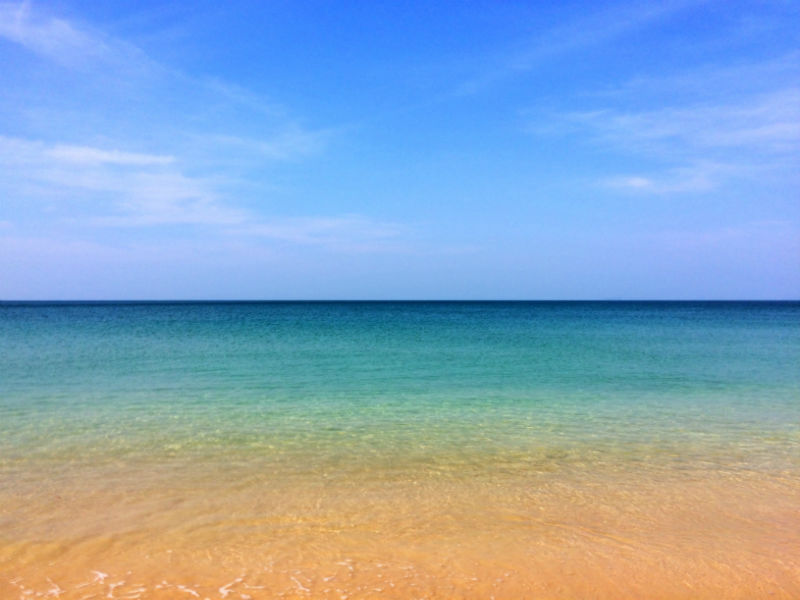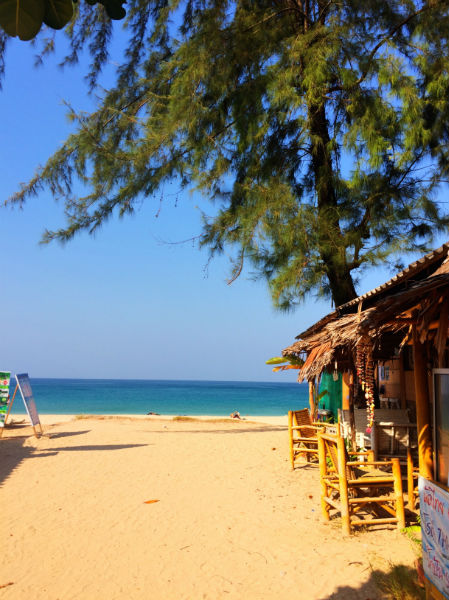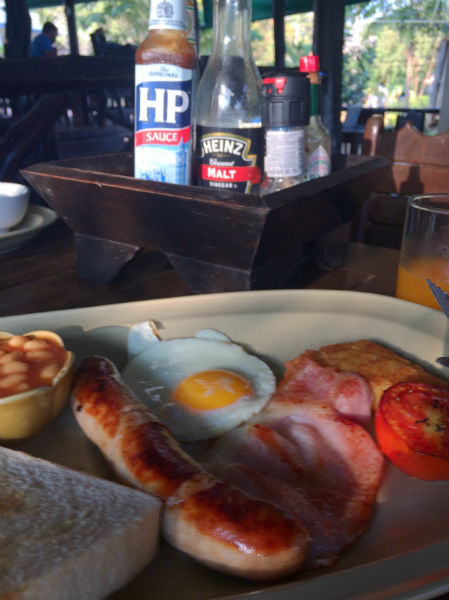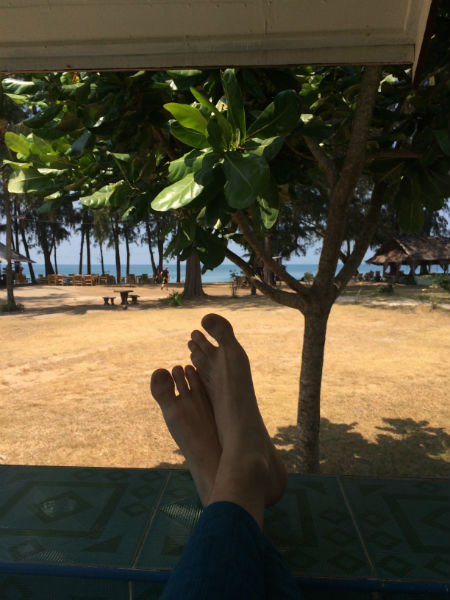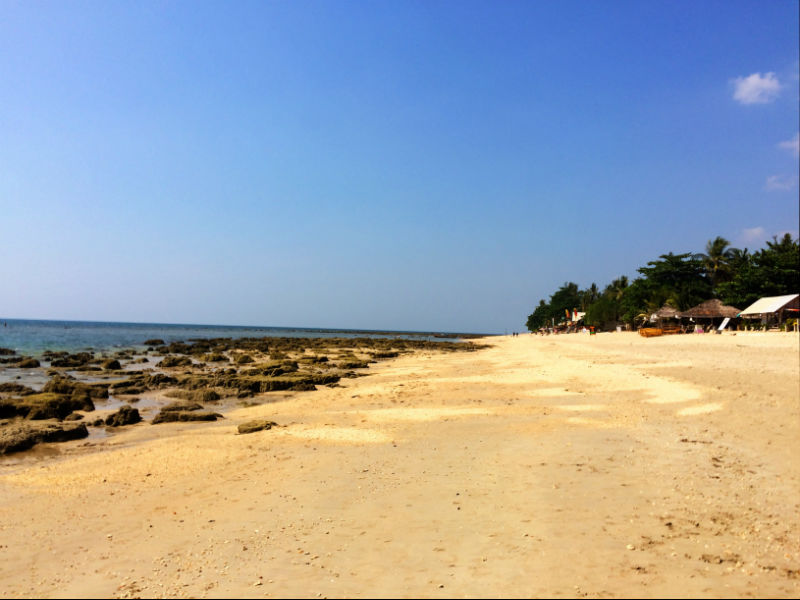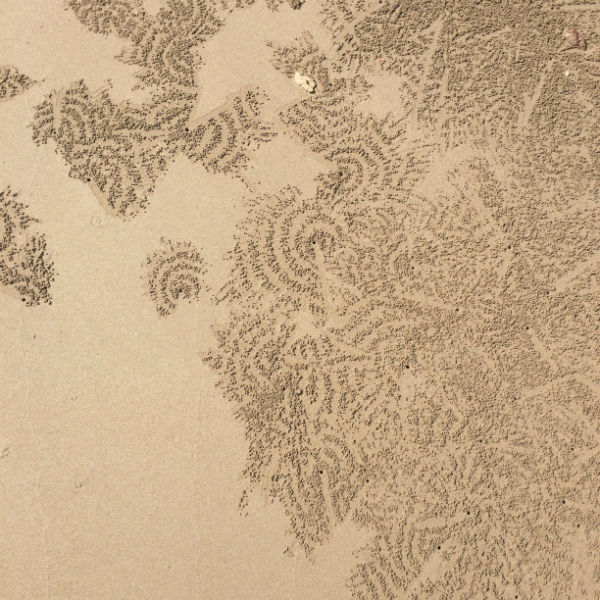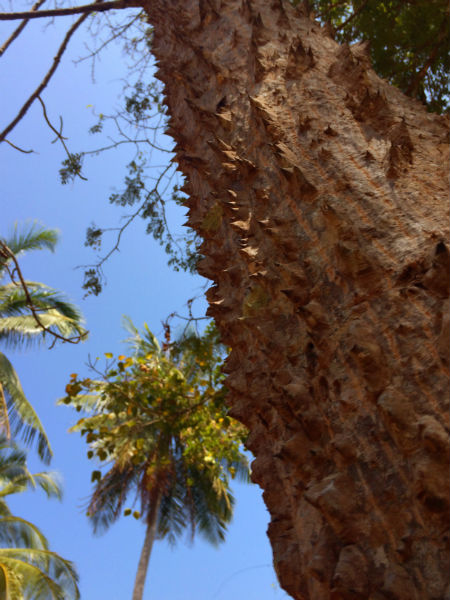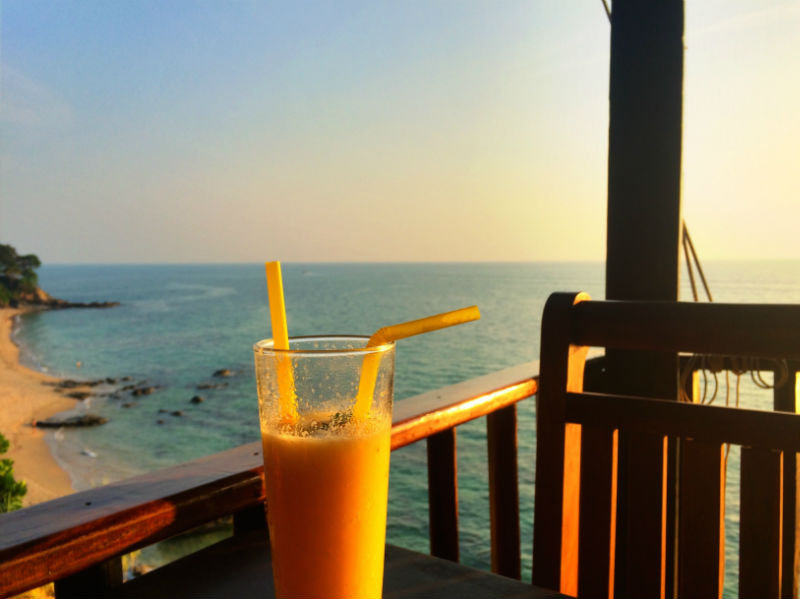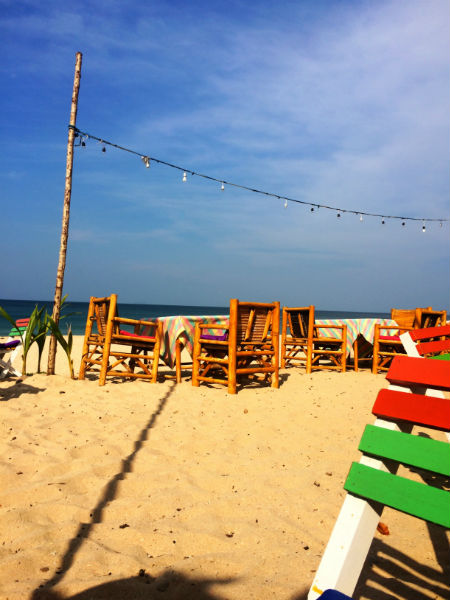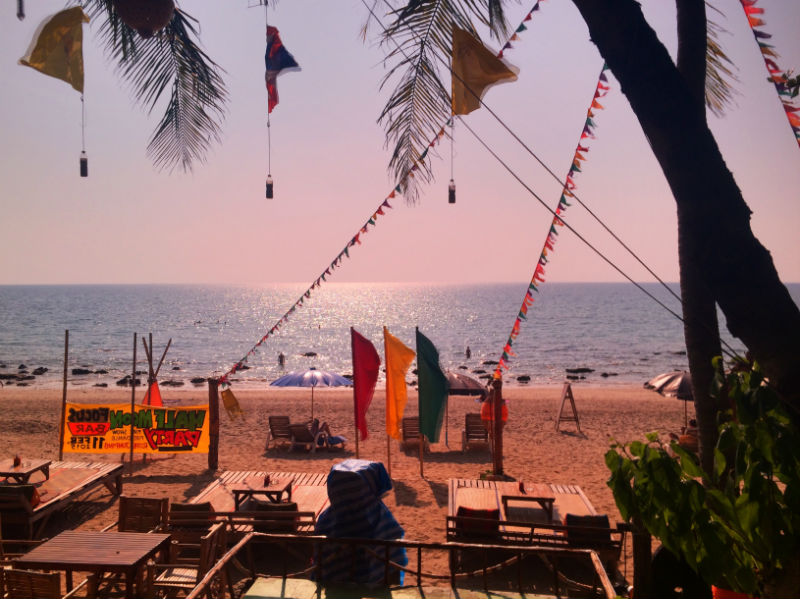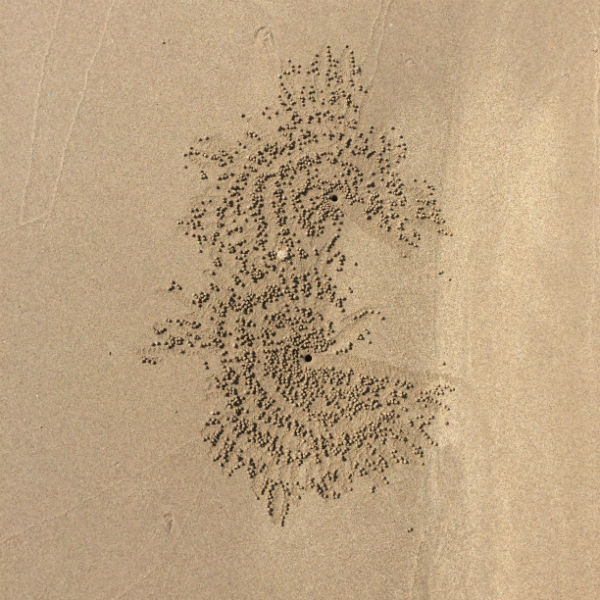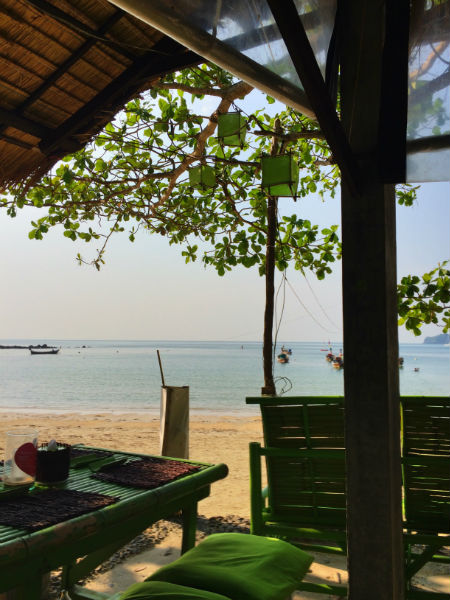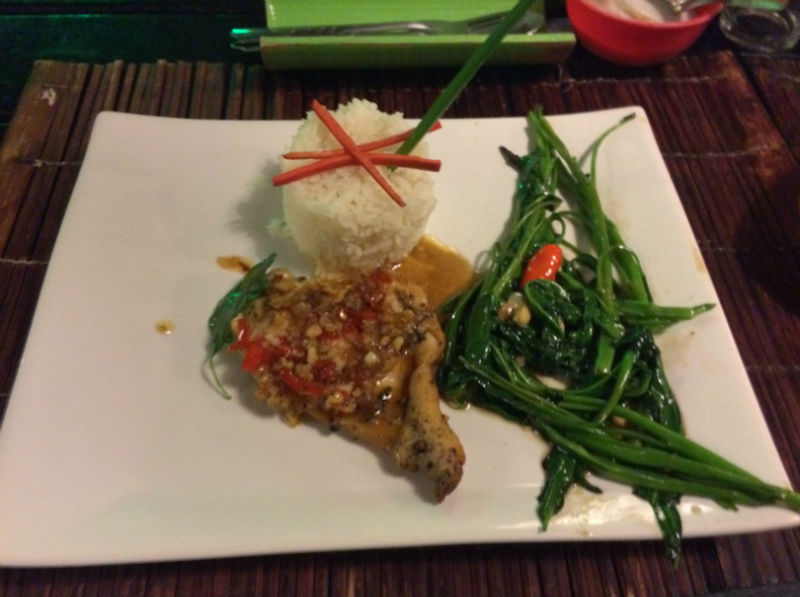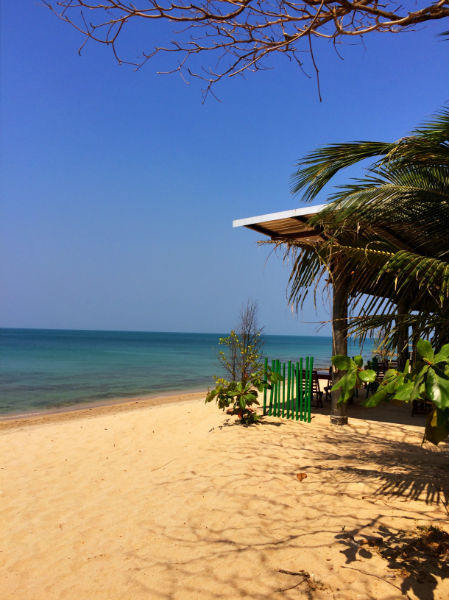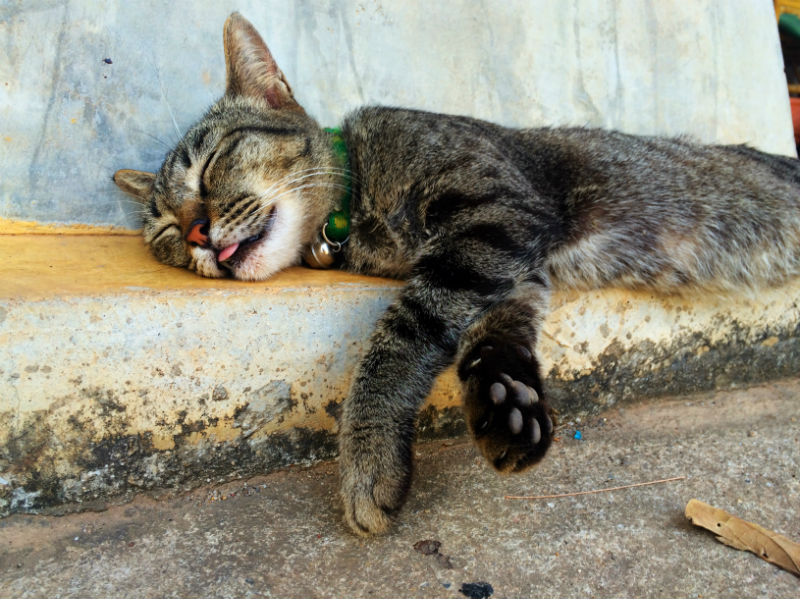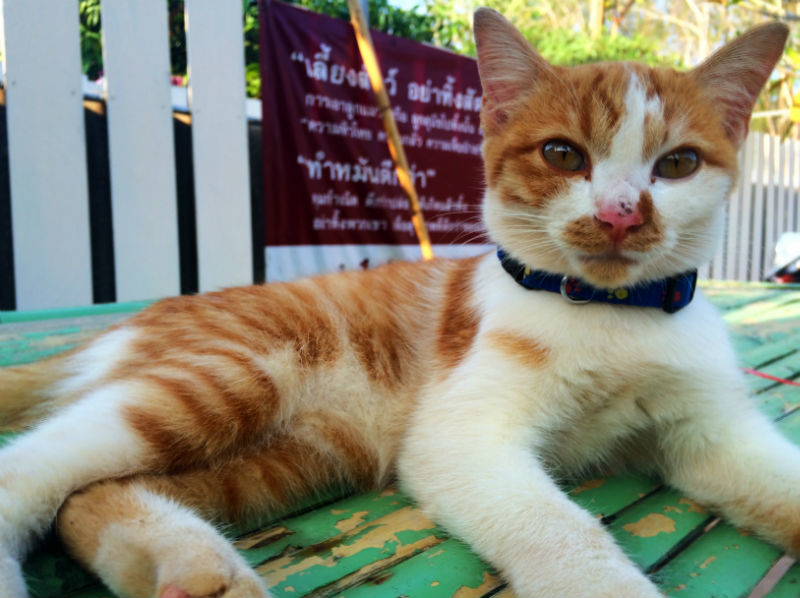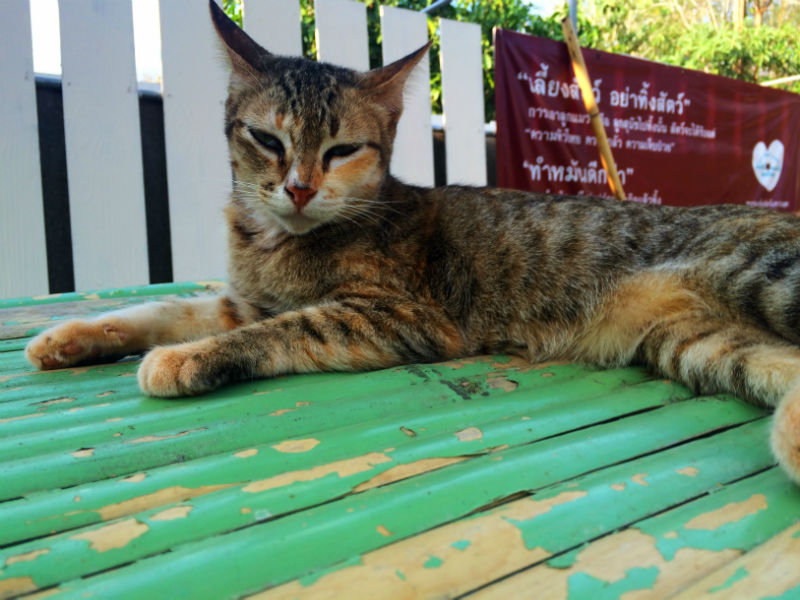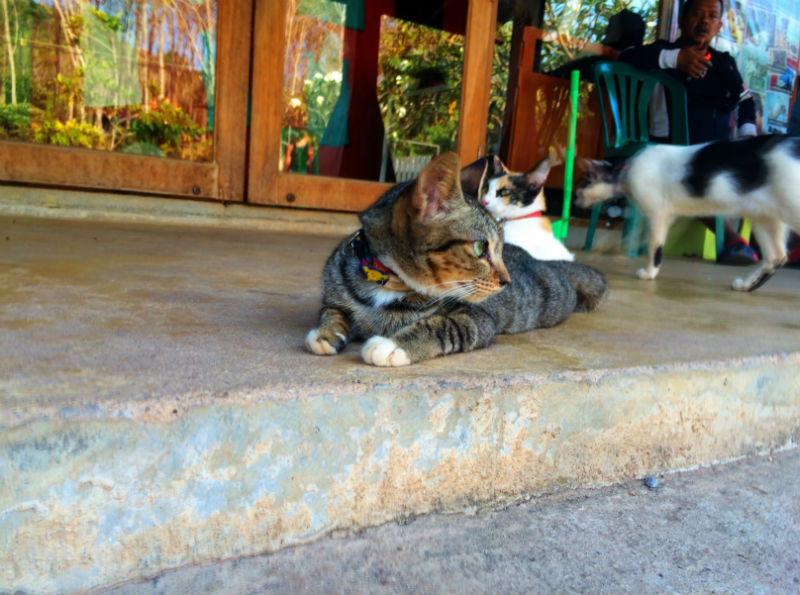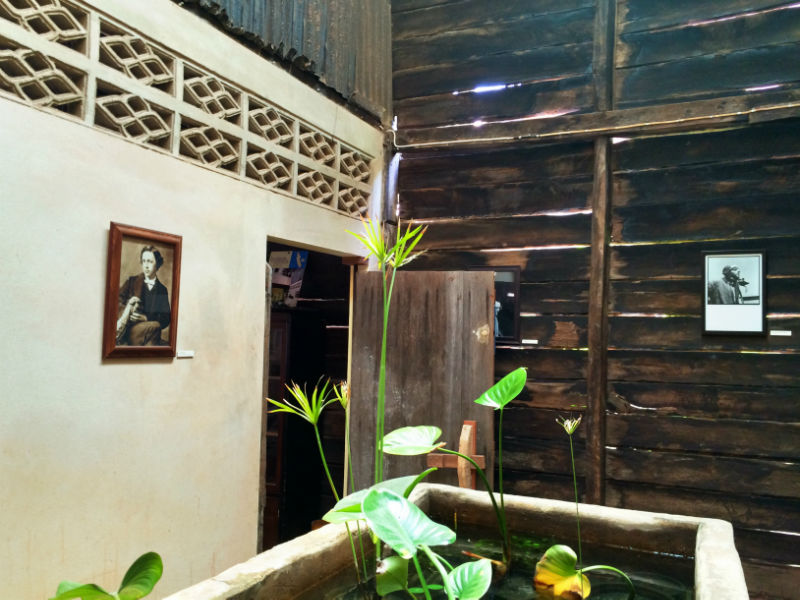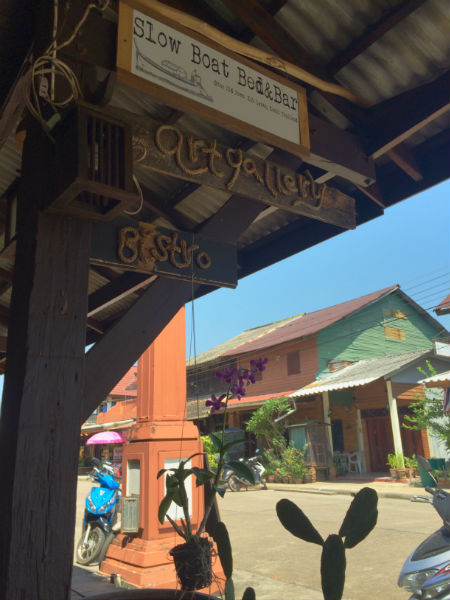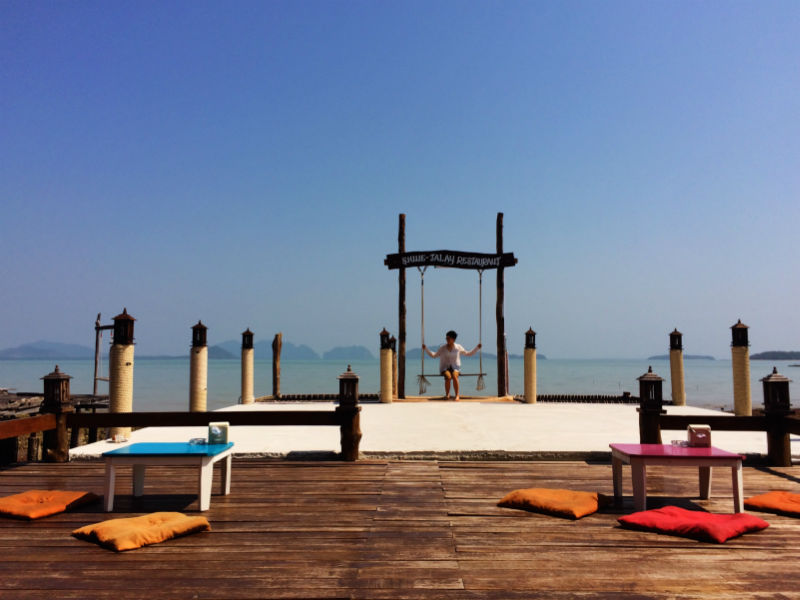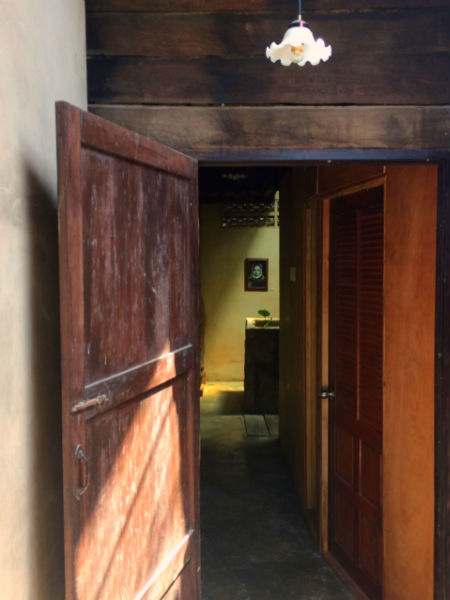When I first stopped there, during my last Asian trip, Ko Lanta immediately became my favourite spot in Thailand.
Not having the best beaches, the best luxury resorts or the best party life, the island has so far escaped most of the tourism-driven uglification of other Thai islands, while at the same time remaining an easy destination for a low-maintenance stay in the sun.
The island economy is still 90% tourism, but its relatively small size and chill vibe do not sell well to party-oriented teenage euro crowds, and its relatively stringent zoning laws due to its status as a national park put a limit to the number of obnoxious walled-in resorts that can blight the landscape. Which might be why it reminded me so much of the first times I travelled through Thailand, some 15 years ago, before the whole of Russian middle-bourgeoisie started spending its Winter vacations lying on deck chairs along the beaches of northern Phuket.
Bamboo Housing
Owing to aforementioned lower rate of development and zoning laws, a good deal of the housing on offer in Ko Lanta is at the more basic end of the spectrum1Not to say there aren’t a few of these huge concrete-y resorts, just like anywhere else in Asia where water meets sand. And yes, these are just as terminally boring as anywhere else. If resort life is what you are after, take my word: Ko Lanta is not where you want to go., which can be a great or not-so-great thing, depending on your tolerance for six-legged creatures, cold showers and bamboo as a major building material.
Actually, any particular item of housing comfort can generally be obtained for a little extra cost, but even when budget is not an issue, there is much to be said for the simple comfort of a basic bamboo bungalow next to the beach. Even at peak season, it takes only a bit of looking around to find the right place, with the right amount of compromise on comfort, cleanliness and simplicity.
One ground rule is to not book your place online in advance. Or at most for the first couple nights if you want to save yourself the trouble of looking, when freshly landed and lugging your suitcase around. Places available online aren’t necessarily bad, but showing in person and asking for vacancies practically guarantees you half-price. With the huge added bonus that you can see the room you’ll actually be sleeping in, rather than whatever propped-up photo set they put together for their website 10 years before. TripAdvisor is a great tool to weed out scams and egregiously bad hotels, but it is incredibly poor at telling just-passable places from hidden jewels2Law of averages. Fleetingness of service quality levels in hospitality businesses. Low IQ of average travelling reviewer.. Lots of decent places on the island are more or less absent from the Internet (or at least from the main online booking websites).
If you were to arrive by boat, do not book from any of the very helpful people coming up to you on the boat or at the harbour, unless you fancy spending your night in a dilapidated sharehouse, deep inland and kilometres away from the next living soul. Anyway, common sense in such situation would dictate that you do not pay a single baht before checking the place in person.
After spending the first two nights at Mook Lanta, a small bungalow resort on the quieter end of Phra Ae beach, which offered one of the most proper British breakfast I had in months, it was easy-enough exploring around and casually looking for the bungalow-on-the-beach that would tick all the boxes of our vacation wishlist (at a fraction of online prices, it turned out).
Dolce far niente
Few major sightseeing spots and an island you can circle by scooter in an hour, mean very little pressure to do anything, and an immediate easy familiarity with the surroundings, which is exactly what I need on a short Winter vacation3Whenever I can set aside a serious chunk of time, I prefer a much more active approach to travelling… When I have but 5 days in between two runs of work deadlines, priorities are different..
Having inherited the delicate complexion of an albino vampire, lying on the beach all day is not exactly my thing. Spending my days next to a beach, with a book and a steady supply of coffee, coconut shakes and fresh mango juice, on the other hand, is totally my thing. And Ko Lanta has plenty of chill beach bars and lovely coffeeshops perfect for that.
Learning Some Thai Cooking
After years of executing my own very approximate Thai curries, from recipes and tips gleaned at random from miscellaneous people of varying authority on the matter, I finally took my first official Thai cooking lesson. Because that’s what you do when you are a thirty-something on a vacation somewhere.
The Time for Lime cooking school is not only a wonderful place to learn a few tricks and do a bit of practice cooking (in between a lot of eating, drinking and socialising), but it’s also the main source of funding for Lanta Animal Welfare: a local NGO that does wonderful work with stray dogs and cats on the island. Although the two are geographically separate, the connection is quickly apparent when you arrive at the Time for Lime resort, where each bungalow comes pre-equipped with its own fluffy kitty (at any time, at least half the residents can be seen lounging on their patio with a book and a cat). The bar and main cooking areas also have the occasional roaming feline, surprisingly well-enough behaved to leave the lessons’ ingredients alone4You would have to at least shackle mine to keep them away from the dried shrimps..
Despite lack of sleep and a bout of sun exhaustion on that particular evening, I still had a brilliant time and learnt a few tricks and new techniques along the way, which should certainly help when Thai food withdrawal kicks in, in the coming few weeks. Whether I’ll ever be able to get my hands on fresh coriander roots in Tokyo is another problem.
Puppies and Kitties
Located a bit further south, Lanta Animal Welfare is where the real animal action lies: a few dozen dogs and twice as many cats. Mostly rescued strays, along with a few temporary visitors receiving care at the volunteer-run clinic.
We went for a short guided tour of the facilities, got introduced to all current four- and three-legged residents, heard more about the way things ran and what could be done to help. One impressive effect of LAW’s decade of work on the island is the notable absence of these packs of stray dogs you see on Thai beaches everywhere else. It seems that the local cat and dog population is kept in check (through neutering campaigns) and taken care of, with many beneficial effects for other islanders, humans and animals alike.
Along with donations (including support through Time for Lime bungalows and cooking classes) and long-term volunteering (for a month or more), the centre also welcomes short-term visitors up for some cat-petting or dog-walking. If you are visiting and miss having a bunch of enthusiastic four-legged companions along on your morning beach run, they might have just what you are looking for.
Old Town
The entire island is neatly split across its north-south axis between a West coast with all the sand beaches and the bulk of tourist activities, and a much less developed East coast with a lot more jungle, some rubber tree farms and a few small fishermen settlements. Close to the south-east tip, the appropriately-named Old Town is where a large portion of Ko Lanta natives live (especially those not working in tourism).
Judging by online comments5Quite possibly the worst way to judge anything., western visitors aren’t particularly impressed with Old Town’s single street of stilt houses, small selection of visitor-oriented cafés and mildly-interesting souvenir shops. I personally quite like its unassuming vibe: old-timey Western town meets fisherman’s village, with a surprising number of small quirky businesses run by travelling-hippies-turned-local-entrepreneurs. In any case, the place is best appreciated when the tide is high6and water is washing away/hiding whatever waste usually accumulates under the houses and the sun low-enough for comfortable outdoor walking: some of the more interesting places require a bit of exploring up and down the coast.
Old Town also has a few guesthouses/B&B places that make up for the absence of beach view with charming wooden architecture, peaceful surroundings and stunning sunrises over the water.
Parties
The fact that the island does not welcome 30,000 chavish party-goers on a regular basis, does not mean it is devoid of nightlife and partying. Unlike heavily family/couple-oriented islands like Ko Kut or even Ko Tao, there is a fair number of younger backpackers stopping by Ko Lanta, and local entertainment options aren’t limited to the depressing evening shows usually put on by all-inclusive resorts.
Not far south from the pier, near the northern part of Phra Ae beach, is where most of the cheap guesthouses and (sometimes even cheaper) bungalows catering to budget travellers and long-term backpackers are concentrated. With it: a good number of places to drink and hear music until late hours. The small network of dirt trails that snakes around this ramshackle mess of bungalows, guesthouses and tiki bars provides the closest version of a bamboo shanty town the island has to offer, but for anyone who has ever been to Haad Rin: incomparably cleaner, safer and overall more enjoyable.
The next beach over, Klong Khong, offers a smaller, more targeted party scene, mainly catering to fans of reggae and reggae paraphernalia. Even if your have a low upper limit on the number of times you can hear Bob Marley’s greatest hits7Although I must admit some Thai reggae is surprisingly good., the bars of Klong Khong are still a nice place to chill on a lazy afternoon or catch a sunset while sampling some of the local goods (openly sold at most bars).
As one goes down the West coast, the already low people density gets even lower (much fewer buildings, save for a couple large luxury resorts) and the landscape noticeably improves: a lot more untouched nature and roadside coffeeshops you actually want to sit at8the road up north, closer to Saladan or Phra Ae, is a pretty unattractive sight, with its alignment of dingy stalls and large deforested areas. Starting with Klong Nin, most beaches in the southern half are blissfully empty, even at peak season, with just enough food shacks and cafes here and there to get your daily supply of curry and fruit juices.
Given enough time, I suspect the perfect Ko Lanta stay might be a combination of nights spent near Phra Ae beach, within walking distance of its low-key party area, balanced with some quiet time spent near Klong Nin or even Old Town. But given the short distances between all these places, it is easy enough making your way around with a scooter (or a tuk tuk).
In a Nutshell: Don’t go There
And do not tell any of your friends about it.
That place is horrible. Let’s hope it remains so.
